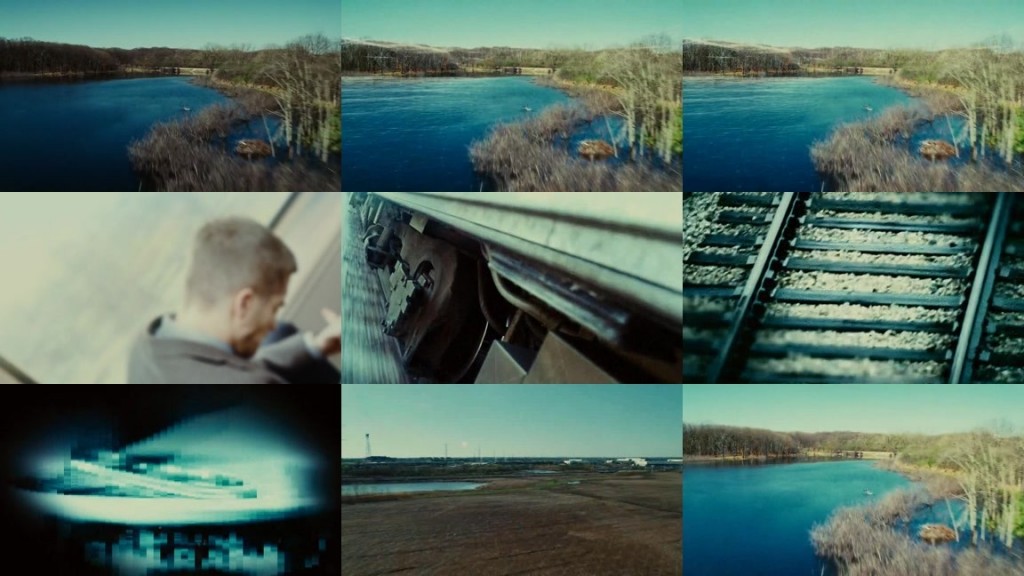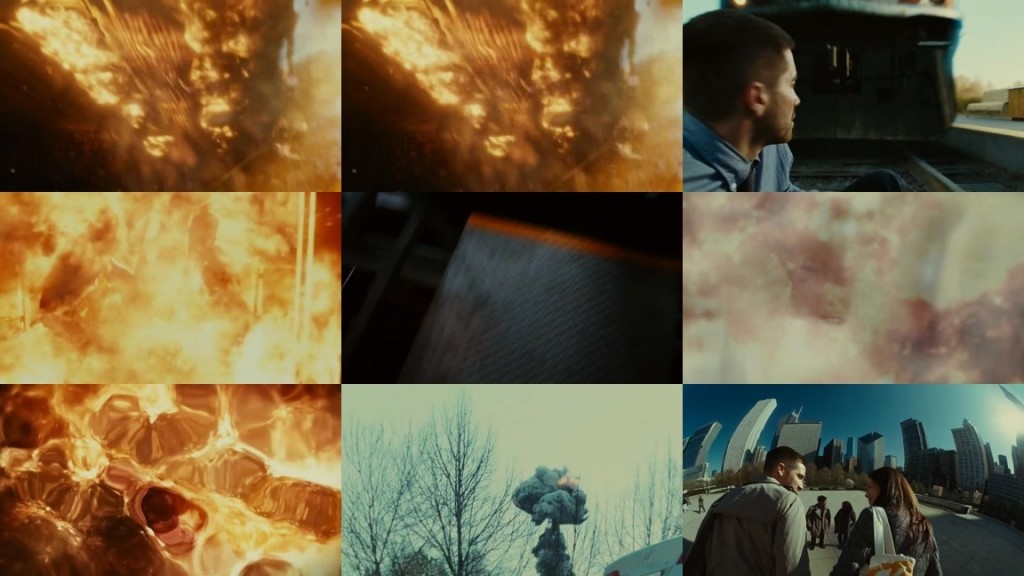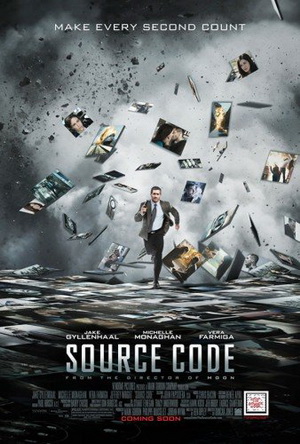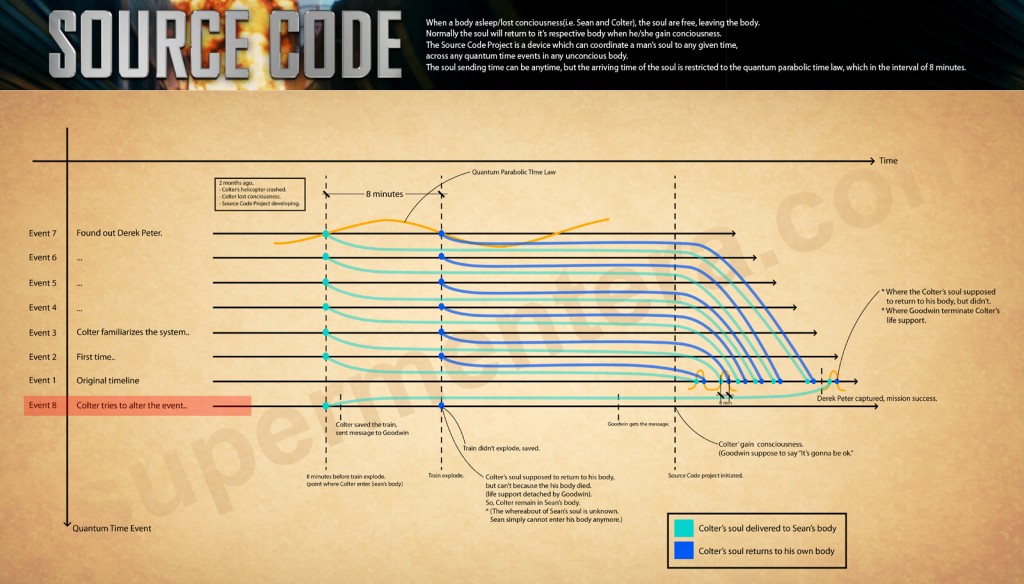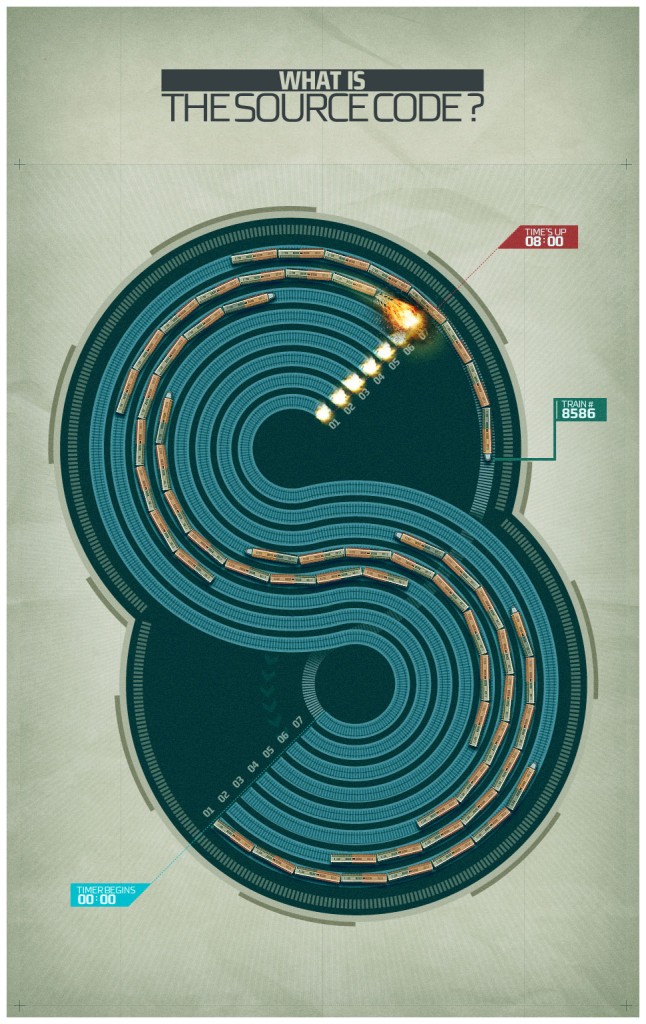[SPOILER ALERT: contains some movie plot infos]
I recently watched the 2011 movie Source Code, in which Jake Gyllenhaal is trapped in the body of a man riding a train about to explode. The plot reminded me of Twelve Monkeys, where a hero is also relentlessly struggling to change history, across a long series of failures. Both movies share in-between sequences, where the hero has to report what he did and is briefed on how to do better next time.
One difference -among many- being that Source Code repeats more often and with more visually similar sequences, than Twelve monkeys (which contain many more ellipses).
The repetitive nature of Source Code resonates with one of my experimental project: Watching Multiple Videos at Once. As I am planning to release anytime soon a montage with the similar sequences in the movie synchronised at the beginning, I created the images below: left is a collage with the first frames for each repetition, right is the last image for each repetition. As you can quickly see, I roughly counted 9 repetitions (which is convenient for a 3x3 frames collage).
I was literarily stunned by their narrative power of this collage. No needs for label, storytelling, comparison or any additional explanation to understand the whole movie, such as how many repetition, how they start and end, and the final outcome of the movie.
The collage on the left (beginning) shows how each repetition starts (read left to right, top to bottom):
- Sequences 1-3: panning over a small lake
- Sequences 4-7: quick jump/fast forwards to actions
- Sequence 8: panning over a field and railroad
- Sequence 9: panning over a small lake, again
This is explained by the movie’s structure. At the beginning, a series of similar sequences tells us what the movie is about: repetition. Then, once repetitions are settled, the next ones skip the introduction and go straight to the action or provide quick fast-forwards. But at the end of the movie, we connect back to the beginning with complete sequences, as a closure mechanism to show that the hero finally nailed the bad guy and accomplished his mission from A to Z.
Ending's collage is a bit less relevant without the beginning's one alongside. It shows that sequences do not finish always with the same type of explosition, it is even skipped sequence 5 and seen from a distance sequence 8. What's interesting here, is the happy ending with the couple walking around in Chicago hand in hand (sequence 9) with no explosion in perspective.
What do you think? As you can observe from the movie poster, I am not the only one considering messing around with the frames from the movie!
There has been other attempts to explain the movie, such as the one below. It is an interesting timeline with each sequence plotted on it.
The info-graphics below also provides a more arty explanation of the movie.



